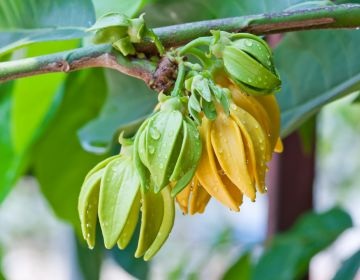Search
PRODUCT CENTER
- Actives
- Plant extracts
- Oils
- Wax
- skin conditioner
- surfactant
- Natural Colors
- Emulsifier
- Sunscreen
- Rheology Modifiers
- Preservative
- Powder
- Insect repellent
- Scrub
- Petals
- Emollient
- Fragrance&Essential oils
- Other
- Moisturizer
- Antioxidant
- Liposome
- Thickeners & Emollients
- Active Ingredients
- Clay
- Mineral powder
- dandruff remover
- essential oil
INCI Name
Product Introduction
Ylang ylang, also known as the "perfume tree," is celebrated as the "flower of flowers." Its name derives from the Malay term [Alang-ilang], which describes the swaying and hanging posture of this flower.
Originally from Malaysia and Indonesia, ylang ylang is now mainly grown in Madagascar, the Comoros, Indonesia, and the Philippines. In the second half of the 19th century, the Philippines was the first to collect high-quality ylang ylang oil, and its rich and fragrant aroma quickly became popular among the upper class in the Philippines, before sweeping through Europe and the United States. Before World War I, the Philippines was the world's center for ylang ylang oil production and held a monopoly. However, after the war, France introduced ylang ylang to the Comoros Islands, where it was highly successful, and today the Comoros Islands have become the world's largest producer of ylang ylang.
The extraction part of ylang ylang essential oil is the yellow flowers picked in the early morning. The freshly picked flowers must be processed promptly to avoid fermentation and reduce the oil yield. The extraction method is steam distillation, which takes about 14 to 20 hours. The same batch of ylang ylang flowers is divided into five products based on the duration of distillation:
- Extra Ylang Ylang Essential Oil: Collected within the first hour after the start of distillation;
- Grade I Ylang Ylang Essential Oil: Collected 1 to 2 hours after the start of distillation;
- Grade II Ylang Ylang Essential Oil: Collected 2 to 6 hours after the start of distillation;
- Grade III Ylang Ylang Essential Oil: Collected 6 to 12 hours after the start of distillation;
- Complete Ylang Ylang Essential Oil: Collected 12 to 20 hours after the start of distillation.
Technical Information
Appearance: light yellow to dark yellow liquid
Extract Part: Flower
Origin: France



